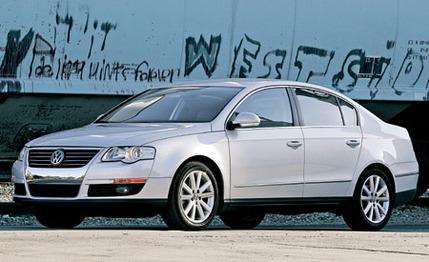
 Road Test
Road Test
Bigger, faster, technically sophisticated, sure-footed, roomy, stylish. Did we mention faster? We did? Well, then, what's wrong with this picture? At a glance, nothing-unless your eye drifted over to the column where it announces, "Price as tested," and you're wrestling with the concept of a mid-size people's sedan that comes in at more than 38 large! Oh, you want all-wheel drive? That'll be another $1950, Charlie.
A little mitigation: The big bottom line on our test car's window sticker included the $5550 Package #2 Sport. We're mystified by this, since most of the elements baked into the package-HID headlights, headlight washers, park warning radar, and a super-premium audio upgrade-have nothing to do with sport. Whatever, if you refrain from that option, you wind up with a number that's a little closer to the price of mid-size reality these days.
But let's hold the financials for later and talk a little hardware.
Volkswagen characterizes this as the sixth-generation Passat, a lineage that spans three decades and a couple name changes. Originally, it was called the Dasher, and it shared its platform with the Audi Fox. This mechanical relationship continued through generation five. But this latest Passat is a new car on a new platform-essentially, the same bones that stiffen the '06 Jetta. Stiffen is not a random word here. VW claims a 10-percent upgrade in torsional rigidity over the previous generation. Measured against some new-model rigidity claims we've seen, 10 percent isn't front-page news, but VW is replacing a platform that didn't seem to need any more iron in its backbone. Manhattan's 59th Street Bridge comes to mind.
We mentioned bigger. The wheelbase stretch is negligible, 106.7 inches versus 106.4; but overall length is up 3.0 inches, to 188.2; width has expanded by an equal amount to 71.7; and at 58.0 inches the new car is almost a half-inch taller. Although these dimensional gains yield a car that's about the same size as a Honda Accord or Toyota Camry, they do add up to a roomier Passat. And inevitably, it adds up to a slightly heavier one. We can't make direct comparisons from our own archives, since the last two Passats we tested were hefty all-wheel-drive models equipped with VW's seemed-like-a-good-idea-at-the-time W-8 engine ( C/D, July and October 2002), and the one before that ( C/D, June 2001) was propelled by a turbo four.
Nevertheless, 3592 pounds is portly for this class. If this Passat had been part of the mid-size-sedan comparison that appears elsewhere in this issue, it would have been the heaviest of the group-a group, we should add, powered by V-6 engines.
Which brings us to what's going on under the hood. The short version: more than enough to overcome a little excess mass. VW's new premium Passat engine is a 3.6-liter, 24-valve V-6, replacing the old 2.8-liter V-6 from Audi and the ill-starred 4.0-liter W-8, a technically interesting innovation that tanked in the marketplace. Never mind. The new V-6 will make you forget the W-8, were you inclined to remember it. This is the latest iteration of VW's clever narrow-angle VR6-two cylinder banks with a common cylinder head, now with variable valve timing and an even narrower angle of just 10.6 degrees between the two banks. The compression ratio is a towering 12.0:1, thanks to the charge-cooling effect of squirting the fuel directly into the combustion chamber, and the output is robust: 276 horsepower at 6200 rpm (six ponies more than from the W-8) and 266 pound-feet of torque at 2750. The engine sits crossways in its bay-the previous Passat had a longitudinal layout-and it transmits power to the front wheels via a six-speed automatic transmission that includes a Tiptronic paddle-shift manumatic function. We'd rate the action of the Tiptronic as average-manual shifts are deliberate, and the transmission's brain will upshift on its own rather than let the engine bounce off the rev limiter. We'd also call the engine a little too snarly at low speeds, although it does acquire a commanding bark when max power is summoned.
By contemporary standards, the 3.6's output numbers aren't extraordinary for its displacement, but it gets the Passat out of the starting blocks with impressive zeal: 0 to 60 in 5.9 seconds, the quarter-mile in 14.3 seconds at 101 mph. Check the acceleration numbers in that mid-size comparo: The V-6 Passat is equipped to play in a slightly more advanced league than those more mainstream middies.